Us makers of “historically accurate” clothing are inveterate bargain hunters. Appropriate fabrics are expensive, and sometimes that bargain is the right fibre and weight, but the wrong colour, so we are often also experimental dyers.
A note on historical accuracy: to be totally accurate, one would have to use fabrics that are hand-woven of hand-spun natural fibre, dyed with natural dyes and hand-finished. While this is theoretically possible, it would be nosebleed expensive, and beyond the time and/or money budgets of most historical costumers.
In my practice, I do my best, but there are many compromises. I try to use natural-fibre fabric, but occasionally a wool mixed with probably-synthetic “unknown fibre” creeps in. I burn test when shopping, but current textile treatments seem to be making burn tests less reliable, and bargain hunting makes taking a snip home & seeing if it dissolves in bleach impractical.
And dyes; I use natural dyes for small pieces and yarns, but fabric lengths need a big & complicated contraption to natural-dye evenly, which I don’t have & don’t have room for. So I dye lengths in the washing machine, using present-day dyes.
In the last week, I had a couple of surprises when I changed the colour of four fabrics!
The first is an elderly length rescued from the basement of King Textiles when they moved. The second is one my favourite salesperson at Archie Fine Wools dug out for me – again from the basement – a few days before the shop closed. The other two I bought at the Textile Museum of Canada’s marvellous Yardage Sale.
- A burn test suggested that the King Textiles one is a wool/cellulose-fibre mixture, but diamond twill is a rare find in commercial fabrics, so I bought it in spite of the suspect fibre content. And in spite of the unfortunate colour, which was an anaemic salmon pink on a grubby cream background. Another compromise – right weave, semi-wrong fibre, wrong colour.
- The bolt for the second one – a faint blue plaid on a tan background – was labelled “wool” (I don’t remember the mill name), and a burn test confirmed it.
- The third – a bluish pistachio length – has “pure new wool” woven into the selvedge; a burn test suggested a wool/cellulose fibre blend.
- The fourth one – a sad, dusty, plum-purple one – has “Kadylaine” woven into the selvedge. This might be a brand of pure wool (“laine” = wool, in French), but might also be a trademark for a wool blend. The burn test also suggested a wool/cellulose fibre blend.
With the apparent blends, I console myself that, at least, if they are actually blends rather than wool treated with something that misleads burn tests, rayon is the most probable cellulose fibre to be mixed with wool, and rayon isn’t reprocessed oil!
The diamond twill from King Textiles 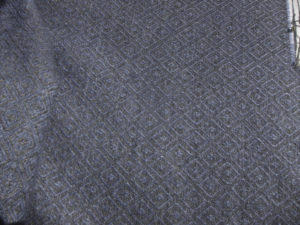
The bolt had been lurking in their storage, likely for a decade or three. Last year I tried dyeing it with “periwinkle” acid dye from G&S Dyes, and didn’t take a “before” picture. The diamonds (presumably the wool component) came out a pretty shade of pale blue on a silvery grey background (the “possibly rayon” component).
However, the colour was uneven, which I’ve never had happen before when dyeing in the washing machine. Not blotches, but broad stripes of deeper blue. I suspect that, in its long time on the shelf, either friction from being shuffled around, or absorption of the acid from the cardboard it was wrapped around, or both, made parts of the fabric more receptive to the dye. In those places, it took more heavily, hence the “stripes”.
I tried dyeing it again, but no luck. It just got a little darker, but the stripes didn’t budge. I was disappointed, and the fabric joined the UFO pile.
This week, since my washing machine was occupied by dyeing projects, I finally got some colour remover and had a go at removing the colour, hoping to take out enough to have another go at dyeing the length. And hoping that the chemical beating it took from the colour remover would make the whole piece more evenly dyeable.
The surprise? The colour didn’t shift much. It’s still the pretty pale blue – what I think the Elizabethan colour “watchet” may have been – on silver grey. BUT the “stripes” are mostly gone, and I can work around what’s left.
It looks like the colour remover selectively took out just the excess the dye!
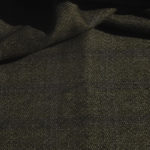 This one was feather-light, with a beautiful, butter-soft hand, and was ridiculously cheap for a quality wool, ($3/yard, if I remember correctly), but the colour was unfortunate – the precise shade of tan that turns my skin sallow and blotchy. It’s possibly even older than the diamond twill – only 32″ wide, which is a width I haven’t seen new since the 1960s!
This one was feather-light, with a beautiful, butter-soft hand, and was ridiculously cheap for a quality wool, ($3/yard, if I remember correctly), but the colour was unfortunate – the precise shade of tan that turns my skin sallow and blotchy. It’s possibly even older than the diamond twill – only 32″ wide, which is a width I haven’t seen new since the 1960s!
I overdyed it with “periwinkle” acid dye from G&S Dyes, which seems to be turning into my go-to dye for shifting unbecoming colours of wool. It came out a lovely, tweedy stone green, with the faint bluish plaid popping to a clear sapphire blue. It also shrank about 30%, which adds to my suspicion that it’s an old yardage – the two more recent wools that I dyed shrank maybe 5%!
The shrinkage also thickened it, so it’s no longer feather-light, and the hand is a little woolier, but that’s OK. I’m going to use it for a Viking apron dress, and the change has transitioned it from Mid-20th Century Men’s Lightweight Suiting to Plausibly Viking.
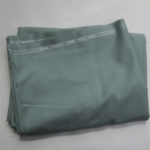 With this one I was aiming at bright spring green, so I overdyed it with yellow. Since the burn test indicated a cellulose component and I had Dylon for cellulose on hand, I tried that. It improved the colour marginally, but not to the green I was aiming for.
With this one I was aiming at bright spring green, so I overdyed it with yellow. Since the burn test indicated a cellulose component and I had Dylon for cellulose on hand, I tried that. It improved the colour marginally, but not to the green I was aiming for.
Not too surprising; if it is actually wool, as the selvedge says, since the Dylon I used isn’t designed to work on wool. So I got some yellow acid dye & had another go. That bumped it up to a lively green.
I’m still not sure about the fibre content. From the way the acid dye took it from a barely-perceptible change to strong spring green, I suspect it actually is 100% wool – but with some kind of finish that confuses simple burn tests.
The sad, dusty plum purple one 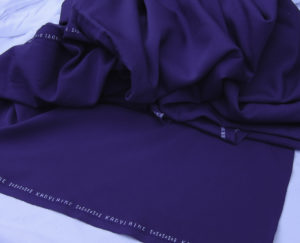
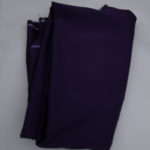 This one was another happy surprise: when I pre-washed it for dyeing – I was going to aim at a deep, deep blue – the sad, dusty look vanished and it lightened a couple of shades. It may have been under-rinsed in the original dyeing process, or just plain dirty.
This one was another happy surprise: when I pre-washed it for dyeing – I was going to aim at a deep, deep blue – the sad, dusty look vanished and it lightened a couple of shades. It may have been under-rinsed in the original dyeing process, or just plain dirty.
Whatever the cause, washing left a lovely violet shade, which is just too pretty to change.
I’m going to make a kirtle out of it, and be damned to the idea that purple is for royalty only!

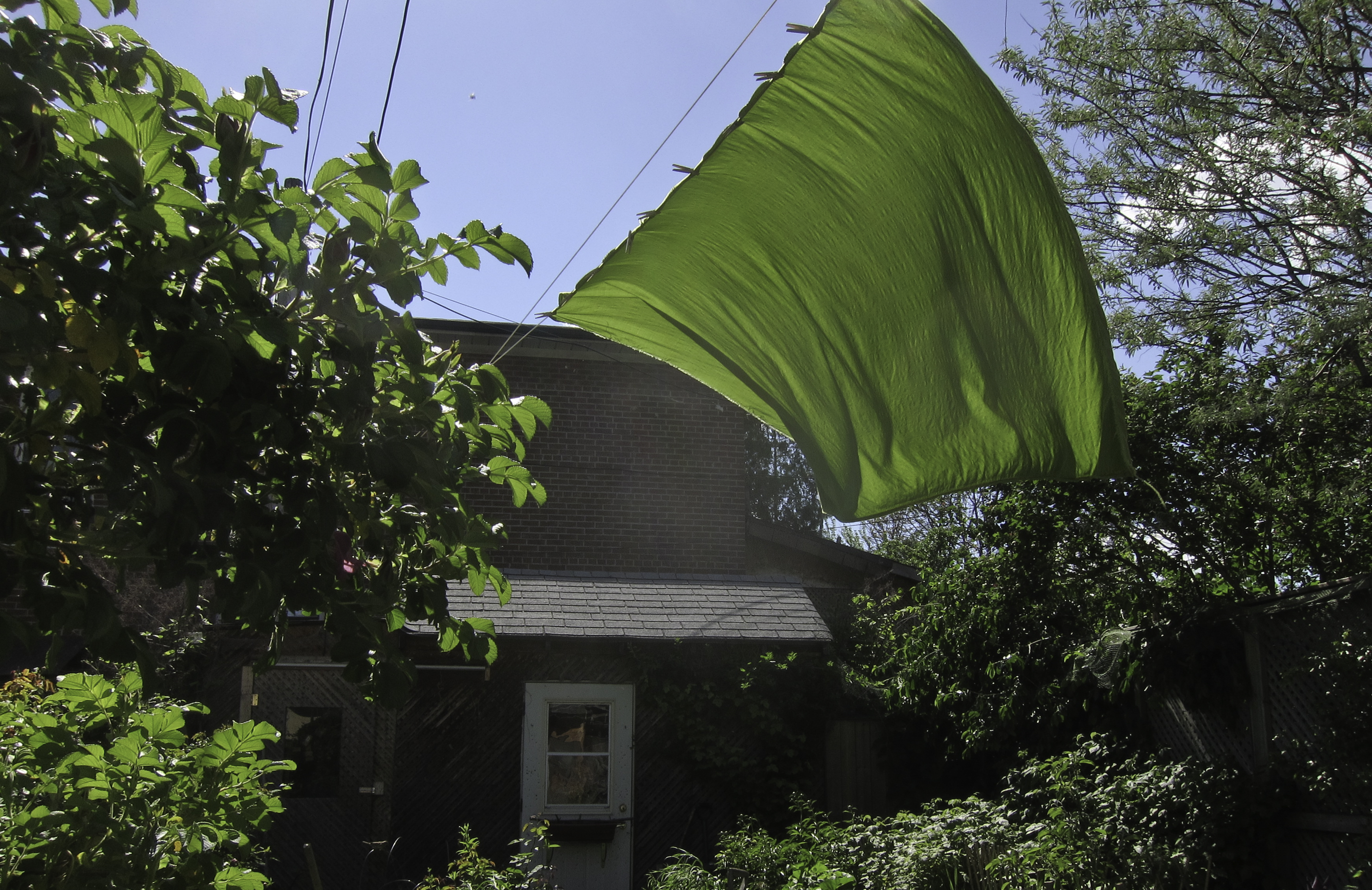
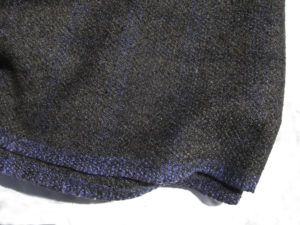
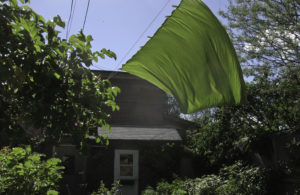
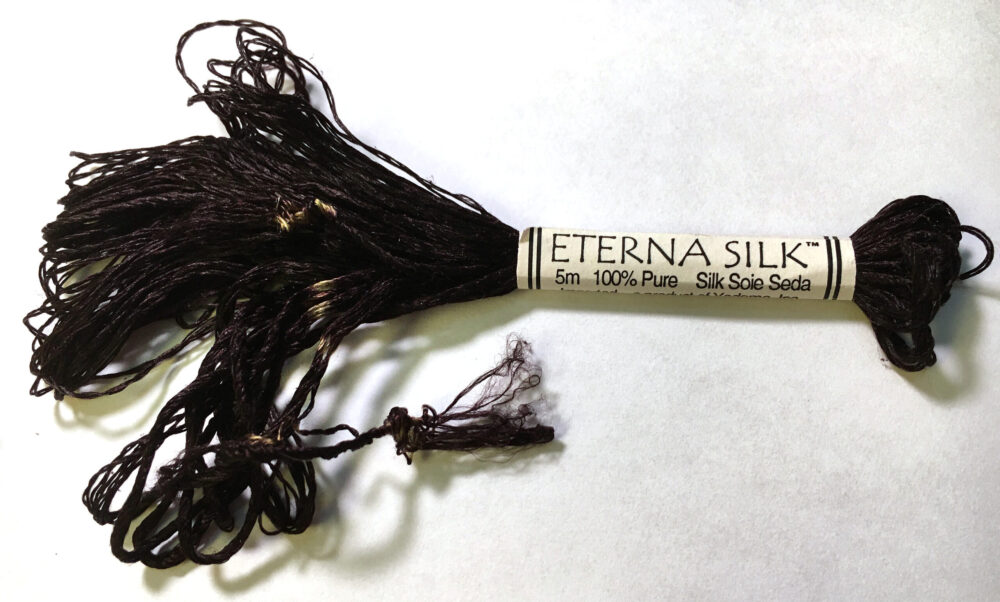
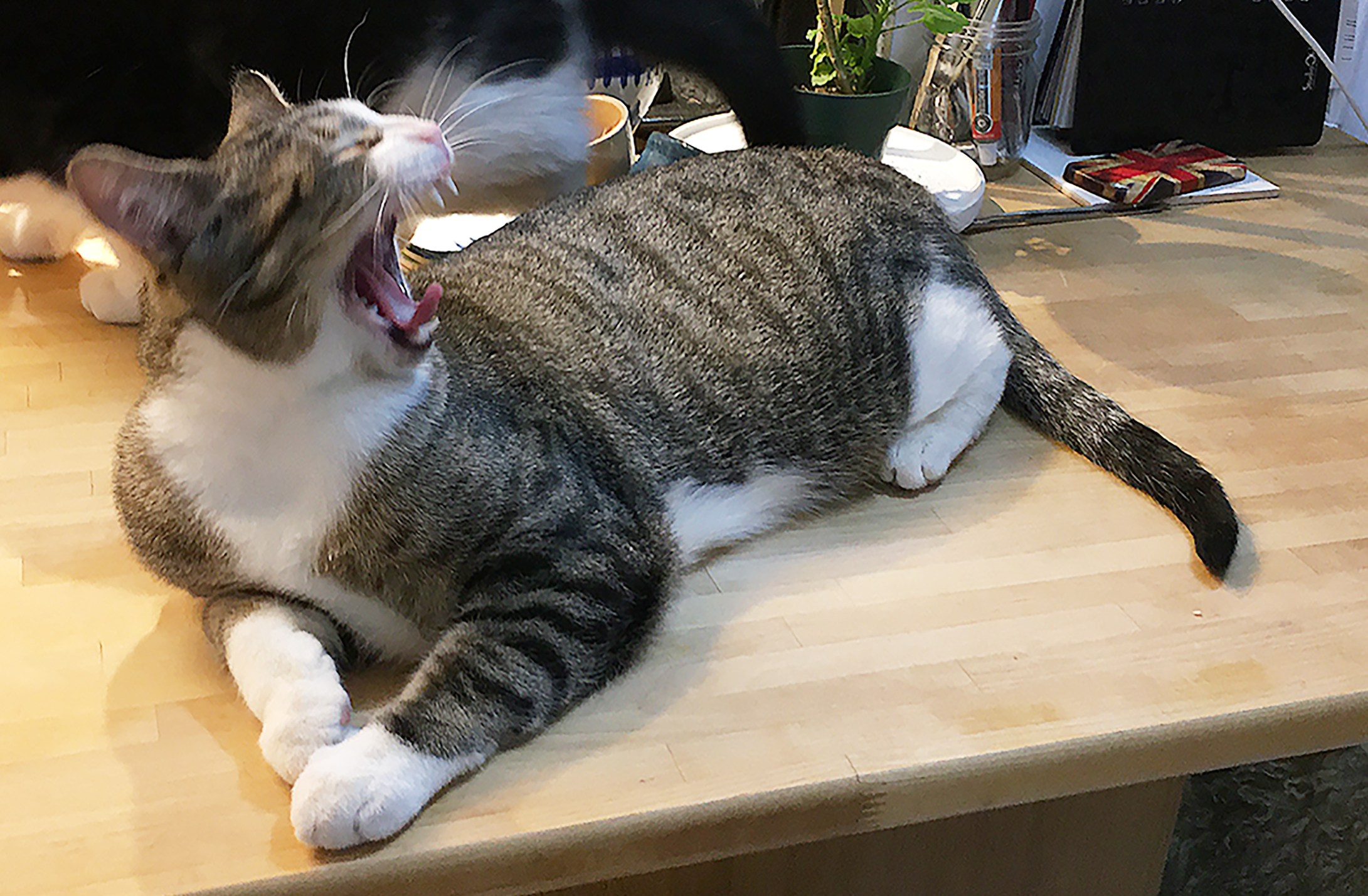
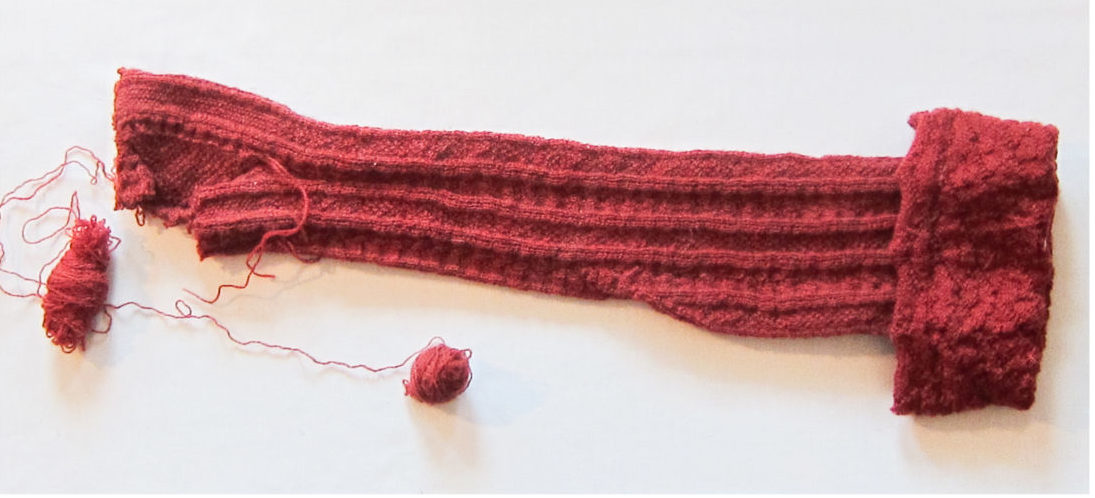
Recent Comments